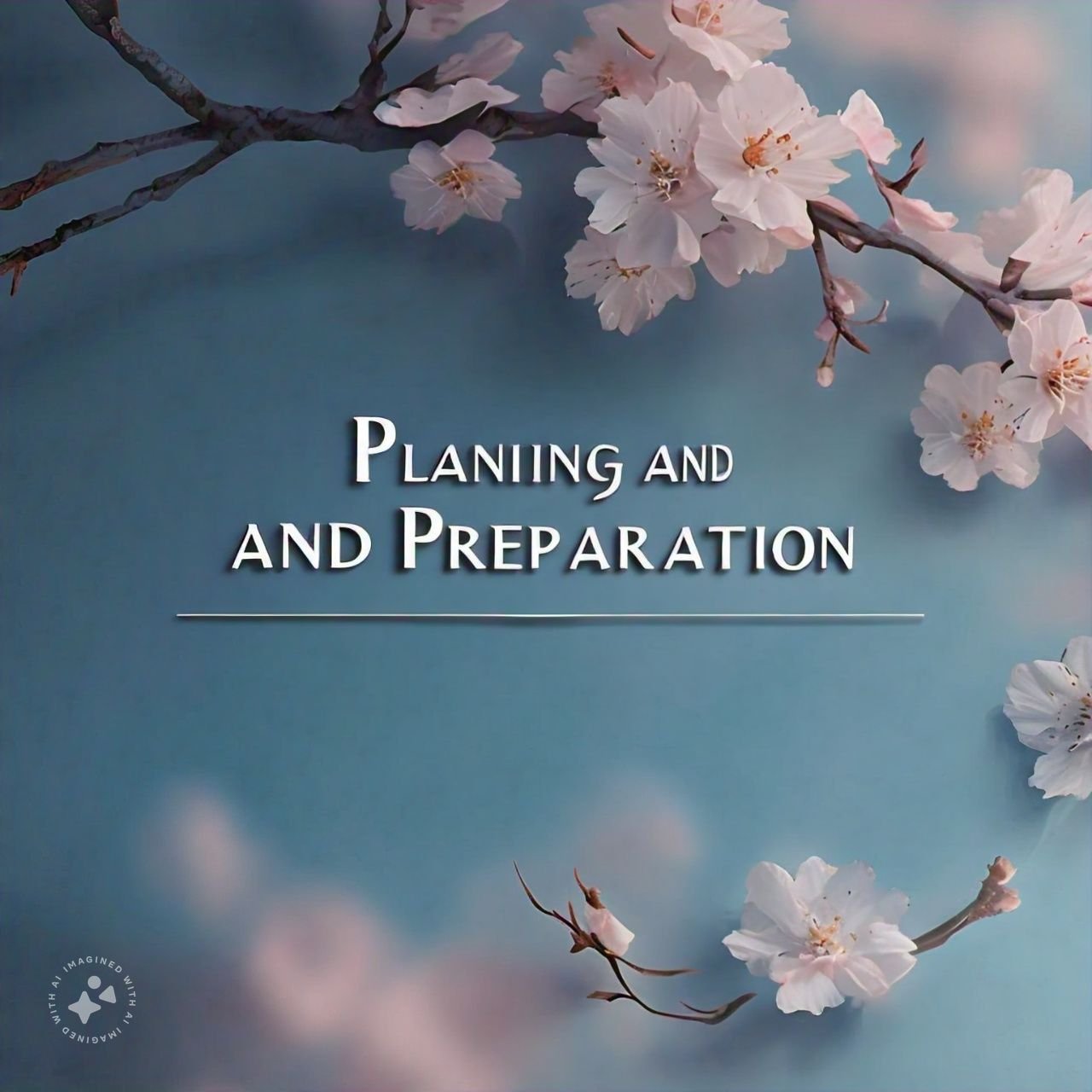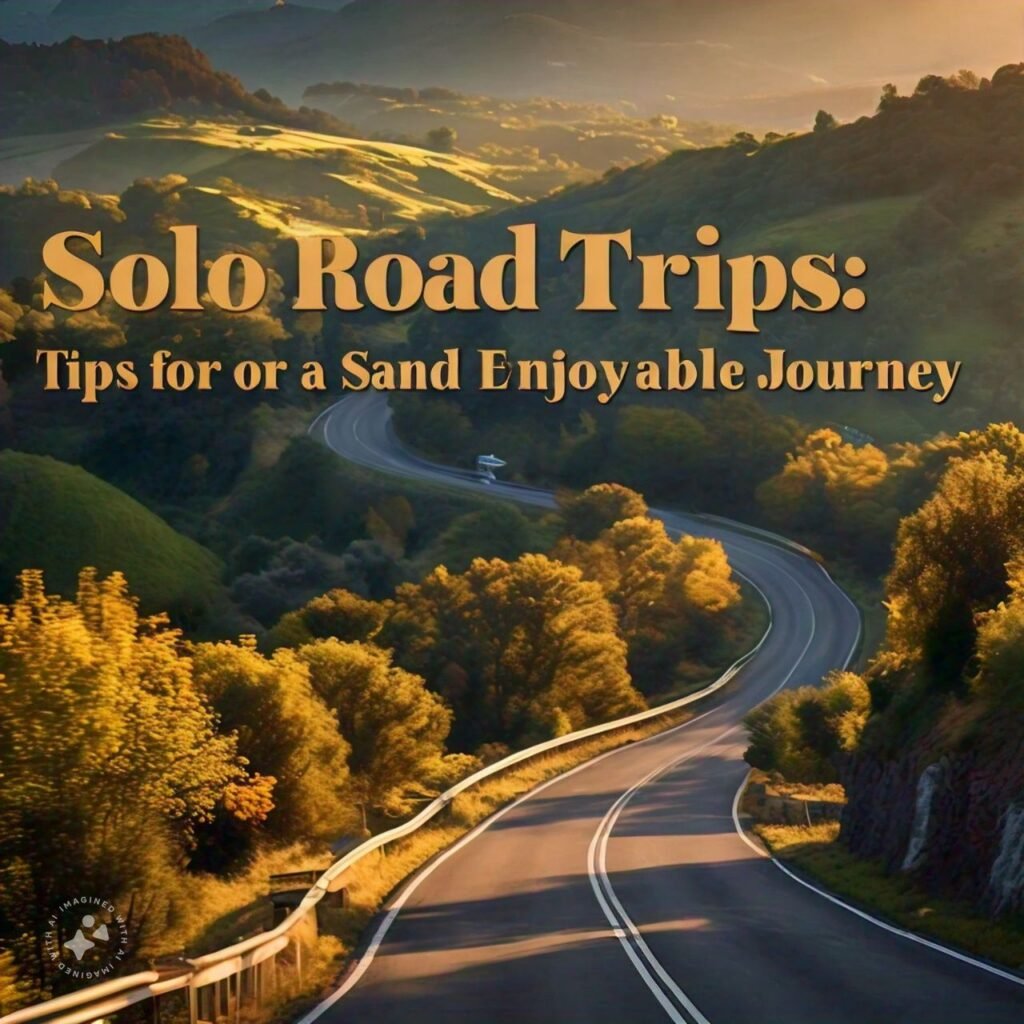Introduction
Solo road trips possess a unique allure, combining the thrill of exploration with the freedom to forge your own path. Traveling alone offers you the ability to choose your routes, stop wherever you please, and relish in the solitude or contemplation of your own company. However, while the adventure can be liberating, ensuring your safety and comfort is paramount. Here, we delve into a comprehensive guide filled with essential tips that will make your solo road trip not just a journey, but an unforgettable experience.
1. Planning and Preparation:

Before you hit the road, thorough planning is crucial. Consider the following steps:
Route Selection
Choose a route that not only takes you to your destination but also offers scenic views or interesting stops along the way. Utilize navigation tools like Google Maps to explore potential detours that might enrich your experience.
Duration and Timing
Estimate how long you want to travel each day. Factor in rest stops, meals, and time for exploration. Don’t forget to consider the time of year—weather can significantly impact travel times.
Weather Conditions
Keep an eye on the weather forecast leading up to your trip. Being prepared for unexpected conditions can make a big difference. Pack accordingly, and consider delaying your trip if severe weather is expected.
Accommodation Planning
Decide whether you’ll be camping, staying in hotels, or using alternative lodging like hostels or vacation rentals. Research places in advance and book accommodations to avoid last-minute stress.
2. Vehicle Maintenance: A Smooth Ride
Your vehicle is your lifeline on a solo road trip. Prior to departure, conduct a thorough maintenance check:
Essential Checks
Oil Levels: Ensure your engine oil is at the recommended level.
Tires: Check tire pressure and tread depth. Consider a spare tire in case of emergencies.
Brakes: Test brake pads and fluid levels to ensure safety.
Fluids: Check coolant, windshield washer fluid, and other necessary fluids.
Roadside Assistance
Invest in a roadside assistance plan. Knowing you have support in case of a breakdown can ease anxiety and make your journey more enjoyable.
3. Emergency Kit: Be Prepared for Anything
An emergency kit can be a lifesaver. Here’s what to include:
Basic Supplies
First Aid Kit: Include bandages, antiseptic wipes, pain relievers, and any personal medications.
Tools: A multi-tool, flashlight, jumper cables, and a tire repair kit can be invaluable.
Navigation Tools: Keep a physical map in addition to your GPS, as signal loss can occur in remote areas.
4. Prioritizing Safety: Staying Secure
Safety should always be your top priority. Follow these guidelines:
Vehicle Security
Always lock your vehicle and secure your belongings. If you’re stopping for a break, take your valuables with you, or hide them out of sight.
Personal Safety
Trust your instincts. If a location doesn’t feel safe, don’t hesitate to leave. Stay aware of your surroundings and avoid isolated areas, especially at night.
5. Health and Comfort: Keep Your Energy Up
Long hours on the road can take a toll on your body. Keep yourself comfortable and healthy:
Comfortable Seating
Invest in a quality seat cushion and a neck pillow for long drives. These can help prevent fatigue and discomfort.
Stay Hydrated and Fed
Bring a reusable water bottle and pack nutritious snacks like nuts, fruits, or granola bars. Regular hydration and snacking can keep your energy levels steady.
6. Local Information: Know Before You Go

Familiarize yourself with the areas you’ll be traveling through:
Research Local Laws
Understanding local traffic laws and regulations is essential to avoid fines or accidents. Be particularly aware of speed limits and unique local rules.
Amenities and Services
Research towns along your route for fuel stations, dining options, and accommodation. Knowing where you can stop can ease travel anxiety.
7. Budgeting: Financial Preparedness
Creating a realistic budget can keep your trip enjoyable:
Estimating Costs
Factor in expenses for fuel, accommodation, food, and activities. Consider using budgeting apps to keep track of your expenses.
Flexibility
While having a budget is important, remain flexible. Unexpected expenses can arise, so it’s wise to allocate a small amount for emergencies.
8. Food and Hydration: Eat Well on the Road
Healthy eating during your trip will help you feel your best:
Snack Smart
Pack high-energy snacks and meals that are easy to eat on the go. Consider items like trail mix, protein bars, and sandwiches.
Hydration is Key
Drink plenty of water, especially on hot days. Dehydration can lead to fatigue and impair your driving abilities.
9. Entertainment and Relaxation: Keep the Mood Light
Long stretches of driving can become monotonous. Keep yourself entertained:
Music and Podcasts
Create a playlist of your favorite songs or download interesting podcasts and audiobooks. This can make the time fly by.
Relaxation Techniques
Incorporate short meditation sessions or deep breathing exercises during breaks to help maintain a calm and focused mindset.
10. Solo Travel Precautions: Stay Connected
Being alone doesn’t mean being isolated:
Emergency Contacts
Keep a list of emergency contact numbers and important documents handy. This should include your identification, insurance information, and emergency contacts.
Local Emergency Numbers
Before reaching a new area, familiarize yourself with local emergency service numbers. Save them in your phone for easy access.
11. Weather Awareness: Prepare for the Elements

Weather can change unexpectedly, so stay informed:
Monitoring Conditions
Regularly check the weather forecast as you travel. Adjust your plans as necessary to avoid severe conditions.
Proper Clothing
Pack versatile clothing for different weather conditions. Layers can be helpful, especially when transitioning between climates.
12. Stay Connected: Communicate Regularly
Maintaining communication with friends or family is important for safety:
Fully Charged Devices
Ensure your phone and other communication devices are charged and bring a portable charger.
Check-Ins
Regularly update someone on your whereabouts, especially if you’re traveling through remote areas.
13. Accommodation: Finding the Right Place
Planning where to stay can enhance your trip:
Research and Reviews
Before booking accommodations, read reviews and ratings. Look for locations that offer security and amenities that suit your needs.
Confirm Bookings
Always confirm your bookings before arrival to avoid any surprises.
14. Respect Local Culture: Embrace the Experience
Engaging with local culture can enrich your journey:
Cultural Awareness
Take the time to learn about the local customs and traditions of the places you visit. This respect can enhance your experience and interactions with locals.
Support Local Businesses
Consider eating at local restaurants and shopping at local stores. This not only supports the community but also offers a more authentic experience.
15. Pack Light: Efficiency is Key
Overpacking can lead to unnecessary stress:
Essentials Only
Bring only what you truly need. Pack a first aid kit, personal items, and a few changes of clothes. Aim for versatility in your clothing choices.
Organize Your Space
Use packing cubes or bags to keep your items organized. This will make it easier to find what you need on the go.
16. Plan Your Routes: Navigating with Ease

Mapping out your journey can save time and trouble:
Navigation Tools
Use navigation apps to plan your routes, including major highways and scenic byways. Familiarize yourself with alternate routes in case of road closures.
Stay Flexible
While having a route is essential, don’t be afraid to take detours for unexpected discoveries. Sometimes the best experiences come from unplanned stops.
17. Solo Travel Safety Apps: Stay Protected
Technology can enhance your safety:
Download Safety Apps
Consider apps designed for solo travelers. These can offer real-time tracking, emergency alerts, and safety tips specific to your location.
Utilize GPS Features
Make sure your navigation app has features for offline use. This can be crucial in areas with poor cell service.
18. Enjoy the Journey: Savor Each Moment
Remember, the journey is just as important as the destination:
Explore and Experience
Take the time to explore local attractions, scenic spots, and hidden gems along the way. Enjoy the freedom to stop and take photos or simply soak in the views.
Stay Mindful
Practice mindfulness by appreciating the sights, sounds, and experiences around you. This can transform your trip into a more fulfilling adventure.
19. Reflect and Document: Capture the Memories
Keeping a record of your journey can be rewarding:
Travel Journal
Consider keeping a travel journal to document your thoughts, experiences, and insights. This can serve as a cherished keepsake.
Photography
Capture your favorite moments with photographs or videos. Sharing these with friends or on social media can extend your adventure beyond the road.
20. Post-Trip Review: Learning for Next Time
Reflecting on your journey can help you grow as a traveler:
What Went Well
Take note of what you enjoyed most and what worked during your trip. This can inform your future travels.
Address Challenges
Consider any challenges you faced and think about how you can prepare for them next time. Each trip is a learning opportunity.
Solo road trips offer more than just a way to travel—they provide a pathway to self-discovery, adventure, and personal growth. By following these tips, you can ensure your journey is not only safe but also filled with joy and unforgettable experiences. So pack your bags, hit the road, and embrace the adventure that awaits you!





